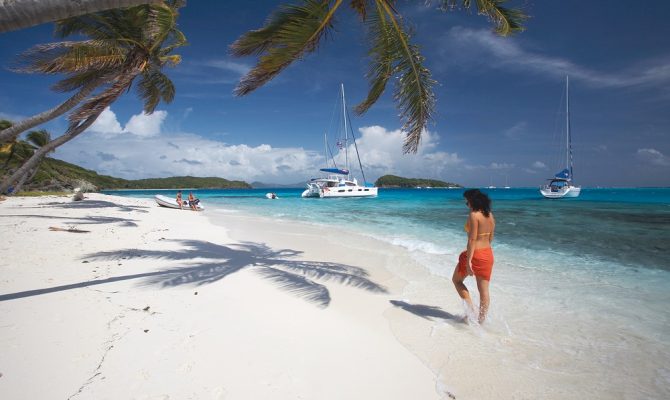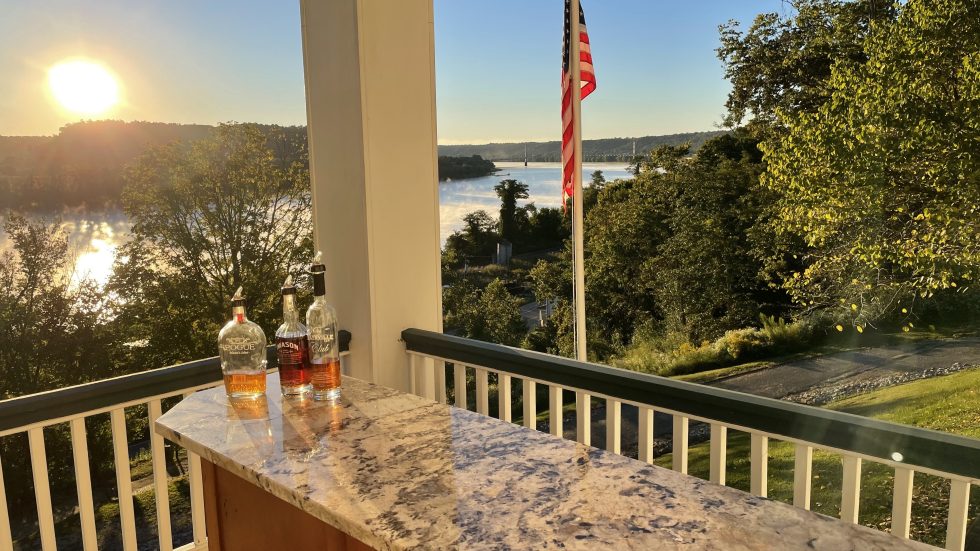To net more on-water vacation time, I’ve tested the boat accommodations market with good success using SleepAfloat; for those of us who appreciate the allure of living aboard, the floating lodgings are an improvement over traditional options ashore. However, most of these accommodations, even when equipped with the means to get underway, are required to remain at the dock except when under the command of the owner. We got around those restrictions by trailering our own boat to use as a “tender,” tying it up to the larger rental each night and using it to explore area waters by day.
But our best boating vacation came when we chartered a power catamaran from Sunsail, which had just opened a rental fleet in Southwest Florida. After a couple hours of instruction by the resident Sunsail skipper, my wife and our 10-year-old son were set loose to cruise “bareboat” style on our own for the week. It was a joy not having to worry about getting back to the dock each evening, and we could drop anchor in protected waters adjacent to wherever the end of the day found us. Because it was a powerboat, we could cruise as the crow flies, making a beeline to our destination when needed, something not always possible when chartering a sailboat. The cat-style hull also allowed us to operate in shallower water than we would have been able to aboard a traditional monohull sailing craft.
Charter Prep
Preparing for a charter vacation starts with some realistic self-assessment: How capable are you, and those who will join you, at handling a boat big enough to live on for a week? Keep in mind we could be talking about a craft in excess of 40 feet in length — sail or power.
Determining your own skills and limitations will decide what type of charter experience will work best for you and yours. There are three major choices:
- Bareboat – chartering a boat only (sans captain or crew) and skippering it yourself
- Skippered – chartering a boat with a captain for the long or short term
- Crewed – chartering a boat with a captain and crew to handle the operation of the vessel
Bareboat charters require the most boating experience, because you’ll be responsible for the day-to-day operations and handling of the craft and the safety of its occupants. Most charter companies require proof of significant boating experience and/or certifications, such as those offered by the American Sailing Association, before they’ll allow you to skipper a boat without one of their captains aboard. Bareboats are the least expensive option, as there’s no cost for a crew or captain.
Skippered charters are hybrids. You can charter a boat with a captain on hand for the duration of the cruise, or for the first few hours to show you the ropes, explain the boat’s operations and explore the cruising grounds. Once you’re comfortable taking the helm yourself, you deposit the skipper back at the dock and head out on your own, bareboat-style, for the remainder of your vacation.
Crewed charters come with a full-time captain and, if desired, a crew to handle everything from boat handling to meal prep and cleanup. No prior boating experience is required to charter a crewed cruise, which also are more expensive than the other two options.
In my case, as an experienced power boater with USCG captain’s credentials, I feel qualified to skipper my own power charter up to a length of about 50 feet, and have done so. I’ve done some small boat sailing, and bareboat chartered a 34-foot monohull sailboat over a long weekend in the Florida Keys years ago. That said, if I were to charter a sailboat today, I’d go for the skippered option until I felt confident I could handle the craft.
Charter Brokers and Companies
To help with such decisions — as well as with making traditional travel arrangements to a place you’ve never visited — consider using a charter broker to help you through the process. A broker works with multiple charter operations to place clients aboard the best possible boat in the best possible destination for his clients’ needs and budget.
Brokers such as Yacht Solutions (theyachtsolution.com) do not charge a fee and serve as a valuable middleman in negotiating with the various charter operators, knowing what questions to ask and making sure that you have all the information and know all that is expected of you in the process. Having such representation is especially handy in the event of a failure in equipment or service, or other disagreement you may have with the charter operation, as the broker will have some leverage in negotiating a settlement.
Three of the leading charter choices — The Moorings, Sunsail and Footloose — are all owned by the same company, Travelopia, based in the United Kingdom. Each has a base in the BVIs, offers boats specifically built for their charter operations. Each also specializes a different type of experience.
Sunsail, the largest of the three, has bareboat sailing charters only. The Moorings offers boats that are a bit more upscale, some with larger owner’s cabins or suites in addition to the regular quarters, in both power and sail configurations. The Moorings also offers crewed yacht options. The charter craft from Sunsail and The Moorings are less than 52 months old, after which they become part of the Footloose fleet. These boats are offered at rates that may be up to 25-percent below those charged by Sunsail and The Moorings for a comparable experience, albeit in more seasoned craft.
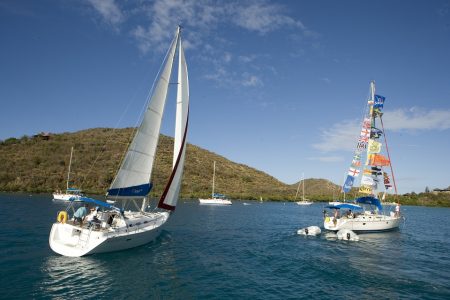
Sunsail
MarineMax Vacations and Navigare Yachting, offering both power and sail charters, respectively, joined forces in 2016. MarineMax established itself in the North American market with its popular marinas and powerboat brands, including Sea Ray, as well as MarineMax Vacations powerboat charters in the Caribbean. Sweden-based Navigare had done the same in Europe with its sailboat operations, and the two now have teamed up to offer power and sail charters in the BVIs, the South Pacific and Mediterranean.
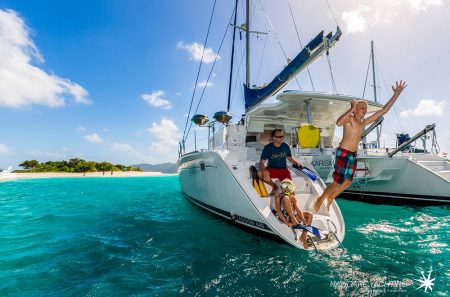
Navigare Yachting
Dream Yacht Charter offers monohull and catamaran sailboats for charter in the BVIs, the South Pacific and Mediterranean, featuring bareboat and fully crewed options. What’s more, Dream Yacht offers by-the-cabin charters, which are popular with guests who want a crewed charter while sharing the expense of doing so with others.
Le Boat is a canal boat charter service with easy-to-skipper, slow-moving power vessels that are popular in Europe. Now owned by Travelopia, Le Boat plans to begin offering charters in Canada in 2018, featuring voyages through the Trent-Severn Canal system.
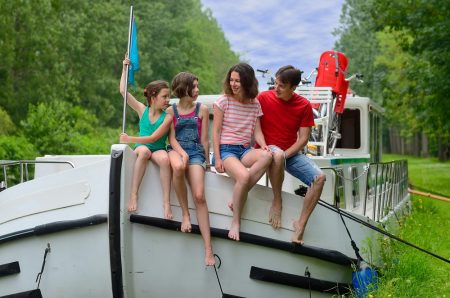
Le Boat
While not offering boats for charter in the traditional sense, we have used Boston-based SleepAfloat to book boat-based — if docked for the duration — accommodations, and recently airbnb and VRBO have included watercraft in their rental listings for vacationing boaters who want to stay aboard rather than ashore, some with a crewed option. A recent search on airbnb.com/mississippi offered 52 boat rental listings in the Midwest, most as bareboat offerings.
Careful Considerations
Most Caribbean charter operations offer catamarans in sail and power configurations. In my experience, sailing a cat is more forgiving of mistakes than is a monohull — and less likely to run aground due to drawing less water. Operating a power cat is an experience, but you get used to its handling characteristics quickly. I’ve found the biggest learning curve comes with factoring in the broad beam, which can be 20 feet or wider.
Power or sail, bareboat or crewed, regardless of the type of charter you’re considering, make sure you keep the following in mind you prepare for your vacation:
- Know who is responsible for provisioning the boat with food, beverages and gear. Most charter operations, and some specialists in popular charter ports, offer such services for a fee. Unless you’re confident of your skills at meal planning and provisioning for cruising, such services are worth every dime.
- Make travel plans well in advance and leave wiggle room for delays in getting from the airport to the charter base.
- Know the customs regulations or your destination(s) and make sure your passports and other travel credentials are complete and current. Ditto fishing licenses, if required.
- Research the weather and pack accordingly, and include proper boating footwear.
- Consider purchasing travel/emergency medical evacuation service insurance.
- Ask about accessories such as snorkeling gear, kayaks, fishing tackle and SUPs, so you can prepare accordingly. Additional fees may apply.
- Make sure everyone is “on board” with the charter concept and knows what such a vacation entails, including the possibility of limited space, privacy and internet access while aboard — along with an excess of relaxation time and boundless adventures to enjoy.
On Skippers
The Moorings offers a temporary skipper on the first day as part of each charter package at no additional cost. Sunsail charges a modest fee for having one of its captains aboard for a few hours to get you accustomed to the boat and its operation, as do several other popular charter operations upon request.
Flotilla Cruising
A flotilla charter is a fleet of chartered boats cruising with a lead boat and crew on a planned route with fun group activities and interesting stops over the course of a week or longer. The concept for a recreational flotilla was developed by Sunsail over 30 years ago and offers the perfect balance between independent boating and the security of a group, in addition with a host of social options.
For More Information
Dream Yacht Charter, dreamyachtcharter.com; 866-469-0912
Footloose Sailing Charters, footloosecharters.com; 877-427-0253
Le Boat, leboat.com; 855-632-0502
MarineMax Vacations, marinemaxvacations.com; 888-461-5497
The Moorings, moorings.com, 877-799-8755
Navigare Yachting, navigare-yachting.com; 385-1-2331-661
SleepAfloat.com; 855-343-3456
Sunsail, sunsail.com, 888-350-3568
Yacht Solutions, theyachtsolution.com; 855-907-9046
[author] [author_info]Dan Armitage is a regular contributor to HeartLand Boating magazine.[/author_info] [/author]

